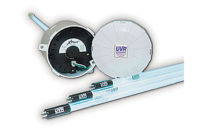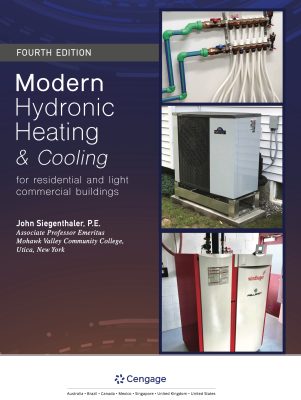Most building owners would agree that people are their most important resource, which makes providing a comfortable, productive environment a priority. Indoor air quality can have a real impact on the absenteeism, productivity and performance of building occupants, whether they are office workers or school children. Properly managing IAQ requires a holistic approach and attention to system attributes such as temperature, humidity, contaminants and ventilation of outdoor air. The negative effects on occupant health and wellness from mismanaged building air are well-documented.

|
Sick building syndrome and building-related illness have been linked to poor indoor air quality for several decades. In 1984, a World Health Organization report on occupational health suggested up to 30% of buildings had excessive occupant complaints related to IAQ.The symptoms of SBS and BRI range from headaches and nausea, to coughing, fever and muscle aches.
Among the potential causes of SBS and BRI are under-ventilated spaces and buildup of airborne contaminants — from indoor or outdoor sources — such as particles, gases, vapors, odors and volatile organic compounds.
IAQ regulations
Building codes and regulations are designed to maintain good indoor air quality and vary depending on building type or application. It is important for building owners to know the codes and standards that apply because of the unique provisions of each state and jurisdiction.
Requirements and recommendations set within ASHRAE Standard 62.1 (Ventilation for Acceptable Indoor Air Quality) are the primary source for these codes. This standard includes requirements for managing poor outdoor air quality; systems and equipment; ventilation rates; construction and startup; and operations and maintenance.
HVAC systems and IAQ
Old or poorly configured heating, ventilation and air-conditioning systems can negatively affect not only energy efficiency but also IAQ. Proper configuration of an HVAC system is imperative to allow for the introduction of outside air, filtration of impurities, and delivery of air with temperature and humidity as desired. These factors also can be affected by the system’s control sequences, as well as proper design and placement of components such as coils, filters, drain pans and humidifiers.
Careful attention must be paid to the air-delivery system design to ensure every zone in the building receives the sufficient ventilation air for all conditions under which the system is expected to operate. Reducing airflow using variable-air volume systems can provide great energy savings, but can lead to under-ventilated spaces if the system envelope is not properly evaluated during design.
A well-designed HVAC system can improve IAQ by incorporating these considerations:
- Entering air conditions (temperature and humidity);
- Equipment location indoors or outdoors;
- Contaminants of concern such as mold, viruses, bacteria, odors, particles and gases;
- Sequence of components in the air handler such as coils, filters, humidifiers, and fans to avoid potential sources for microbial growth; and
- Heating and cooling coil selection with awareness of part-load conditions to avoid temperature and humidity problems.
Proper sizing, arrangement and application of the mechanical equipment helps ensure the air delivered to the space will be of adequate temperature and humidity, cleaned of airborne contaminants and with a sufficient amount of ventilation air.
Energy-efficient strategies
Improving energy efficiency while maintaining good IAQ can be challenging, and the strategies for each are often conflicting. There are a number of ways to make an HVAC system more energy-efficient while still minimizing the negative impact on IAQ, including maintenance, retrofits, upgrades and new system controls.
Maintenance:As filters become loaded with particles, they are more resistant to airflow, which increases energy use. The accumulated dirt also becomes a potential breeding ground for fungi and bacteria. Changing filters as necessary ensures air is cleaned and at the lowest feasible energy cost.
Routine inspection and cleaning of dehumidifying coils and drain pans ensures these components don’t become sources of airborne contaminants such as mold and bacteria spores. Examples include keeping the coil condensate properly drained and the coils and drain pans clean. Applying UVGI lamps also can help mitigate potential growth of mold and bacteria.
Retrofits and upgrades:Common retrofits in HVAC systems include UVGI lamps on cooling coils and enhanced particle or gaseous filtration. Make sure to evaluate whether the system is capable of handling these added components.
New system controls:Problems often can be traced back to improper use of the equipment rather than the equipment itself. Commissioning of new or existing equipment can help to ensure proper HVAC performance and find system shortfalls.
Contaminant control:Indoor air is made up of indoor and outdoor pollutants — a mixture ranked among the top five environmental risks in public health by the U.S. Environmental Protection Agency. The methods for addressing indoor air contaminants are source control, local hooding/exhaust, dilution with fresh outdoor air (ventilation) and air cleaning. When the first three options are not available or practical, air cleaning becomes the preferred solution for contaminant control.
It is important to consider the building codes and specific application of the building when working to optimize IAQ. Following these tips and best practices for managing IAQ can help building owners improve the energy efficiency of their facilities while also providing a comfortable, productive environment for building occupants.






